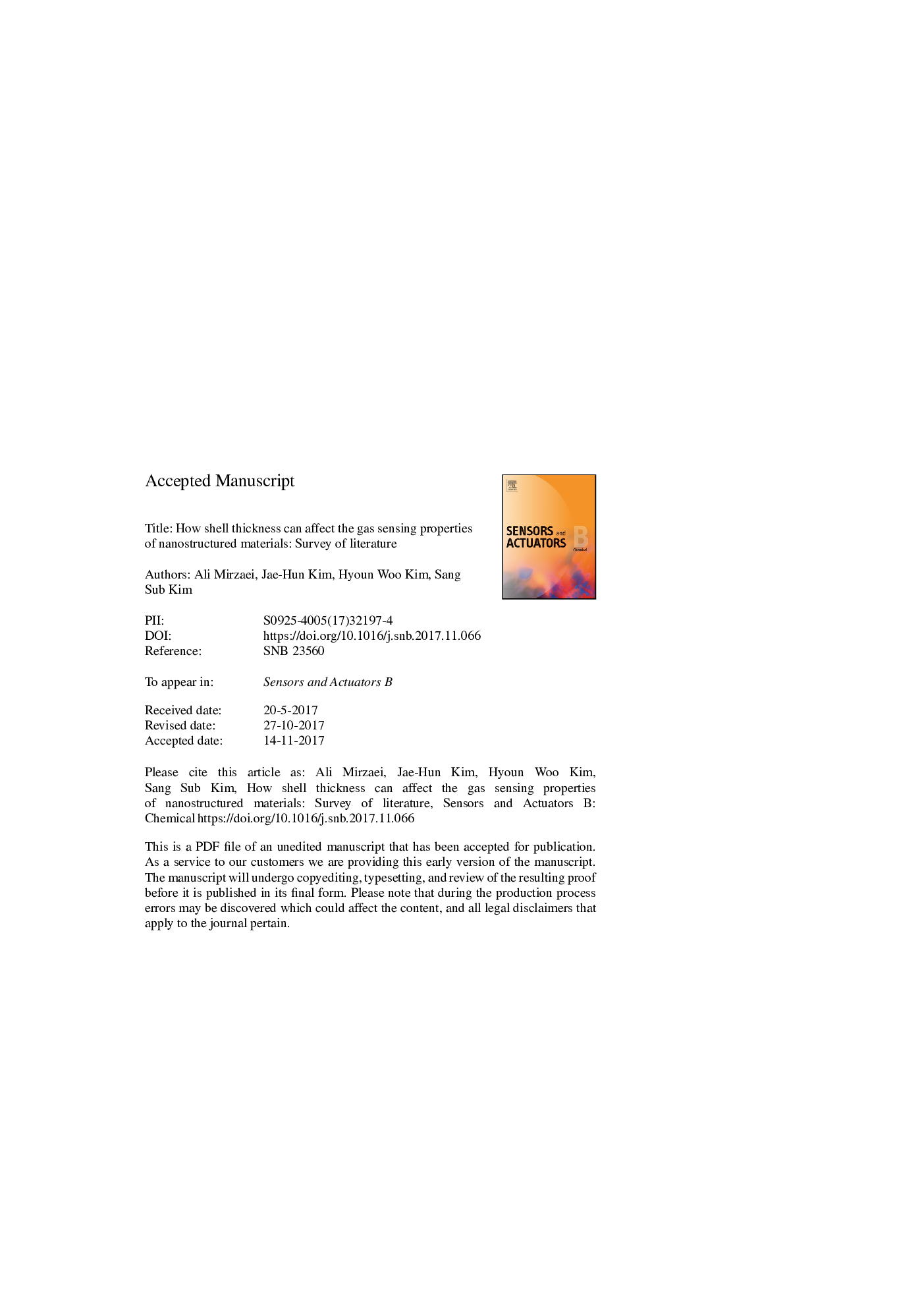| Article ID | Journal | Published Year | Pages | File Type |
|---|---|---|---|---|
| 7141124 | Sensors and Actuators B: Chemical | 2018 | 79 Pages |
Abstract
High-performance gas sensors are needed to improve safety in daily life. Even though the gas sensing performance of new nanostructured metal oxides has improved significantly, some aspects of these novel nanomaterials have not been fully explored. Core-shell (C-S) and hollow shell nanostructures are two types of advanced materials for gas sensing applications. Their popularity is mainly due to the synergetic effects of the core and shell in C-S nanostructures, the high surface areas of both C-S and hollow nanostructures, and the possibility of tuning the shell thickness within the range of the Debye length for such nanostructures. In addition to the type of sensing material, morphology, sensing temperature, and porosity, shell thickness is one of the most important design parameters. Unfortunately, less attention has been paid to the effect of shell thickness on the gas sensing properties. Herein, we demonstrate that the thickness has an undeniable role in the gas sensing response of the resulting material. In this review, we present the first overview of this aspect of sensing materials. By referring to related works, we show how shell thickness can affect the sensing properties of both C-S and hollow nanostructures. Researchers in this field will be able to fabricate more sensitive gas sensors for real applications by better understanding the effect of shell thickness on the gas sensing properties of C-S and hollow nanostructured materials.
Keywords
Related Topics
Physical Sciences and Engineering
Chemistry
Analytical Chemistry
Authors
Ali Mirzaei, Jae-Hun Kim, Hyoun Woo Kim, Sang Sub Kim,
